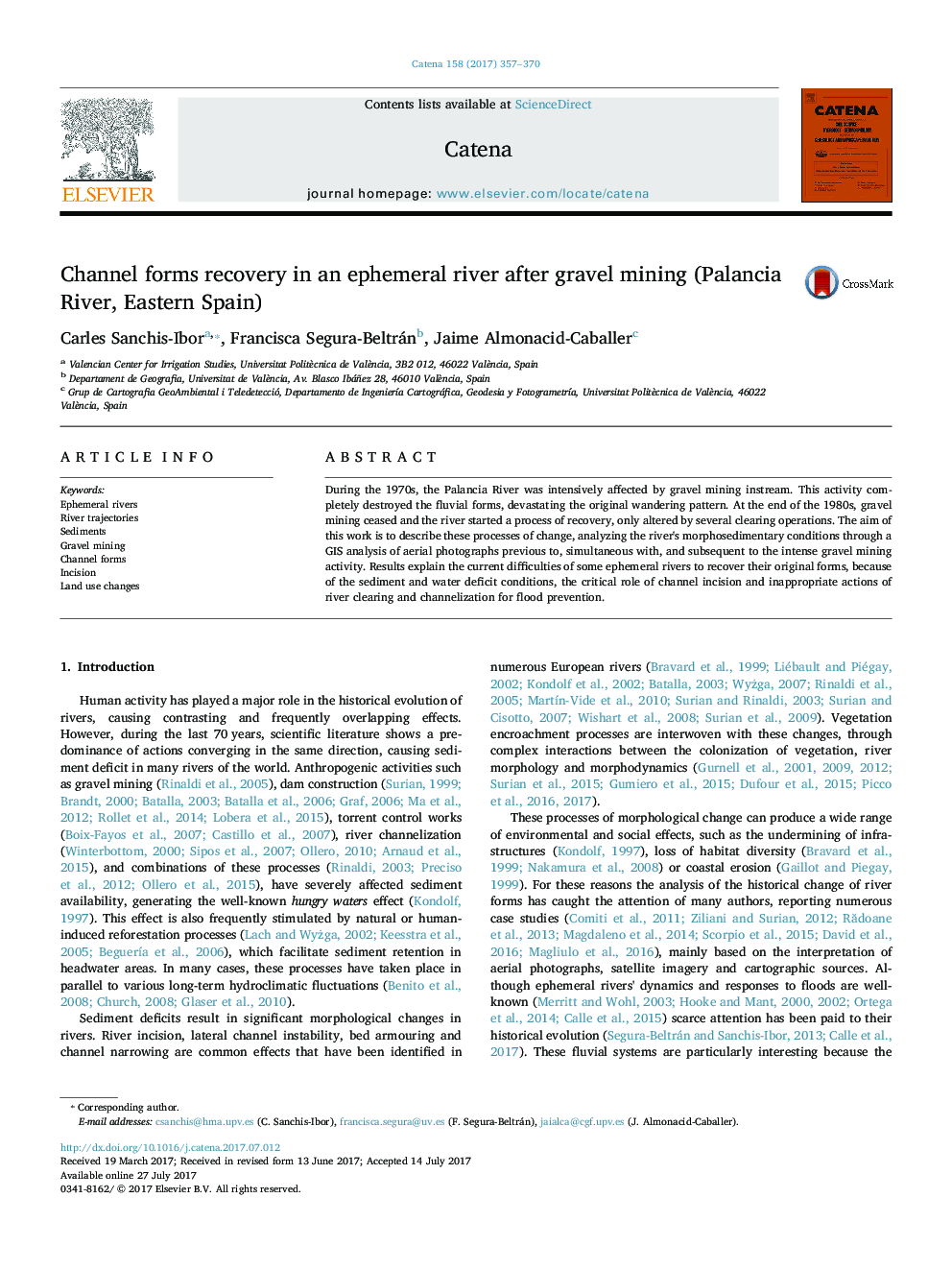| Article ID | Journal | Published Year | Pages | File Type |
|---|---|---|---|---|
| 5769917 | CATENA | 2017 | 14 Pages |
â¢We analyzed the evolution of an ephemeral river devastated by gravel mining.â¢Sediment and water deficit conditions determined the process of recovery.â¢Incision has played a major role in the process of recovery.â¢Dry periods stimulated vegetation encroachment processes.â¢Clearing and maintenance actions hindered the spontaneous process of recovery.
During the 1970s, the Palancia River was intensively affected by gravel mining instream. This activity completely destroyed the fluvial forms, devastating the original wandering pattern. At the end of the 1980s, gravel mining ceased and the river started a process of recovery, only altered by several clearing operations. The aim of this work is to describe these processes of change, analyzing the river's morphosedimentary conditions through a GIS analysis of aerial photographs previous to, simultaneous with, and subsequent to the intense gravel mining activity. Results explain the current difficulties of some ephemeral rivers to recover their original forms, because of the sediment and water deficit conditions, the critical role of channel incision and inappropriate actions of river clearing and channelization for flood prevention.
